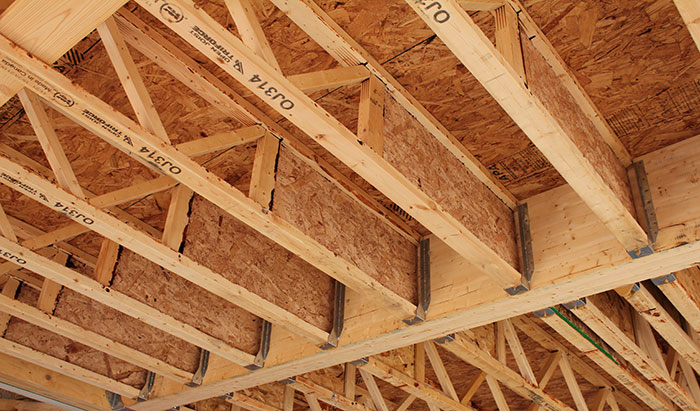Deflection is the vertical up and down movement of a floor when it is subjected to loads. Deflection performance is both a safety and a comfort consideration. Perceived quality is another related consideration. It’s not as well understood, but it’s also important.
Safety
Building codes define allowable deflection to keep flooring and ceiling materials from cracking. It will also keep doors and windows from jamming. Limits on allowable deflection keep buildings (and people) safe.
Loads
When a designer calculates allowable deflection they are taking into consideration live, dead, environmental loads, special loads and moving loads. Live loads can be people, furniture or other movable items. Dead loads are the weight of the structure/materials itself. There are naturally created environmental loads. They can include wind, snow, seismic and lateral soil pressures. Special loads include permanent loads in a specialized area such as Mechanical Rooms, Hot tub or even planter boxes. Moving loads are large ones that can be moved and they need to be accounted for over the whole floor system. They include larger printers or gym equipment.
Comfort
With all loads accounted for, the designer can approach the problem of comfort. There are a few different design parameters that can help the designer reduce deflection and increase assembly stiffness. Reducing the span of the joists or increasing the depth of the joists, for example. Even more effective: reducing the o.c. distance between joists. Other components can also be considered. Rimboard, blocking and strongbacks can increase the floor’s cohesiveness. Also reccomended: adding ½” gypsum board to the bottom of the floor assembly. That’s because it not only helps increase stiffness but greatly increases fire safety as well.
Deflection is a comfort consideration as well as a safety factor
Deflection is a comfort consideration because it is one of those things, along with vibration, that that people are sensitive to. Too much of it makes a floor feel unsafe or poorly constructed. Increase a floor’s stiffness and one gets a pleasurable feeling of solidity. It thus can increase perceived quality and value.
Perceived quality
The more attention to reducing deflection, the higher the degree of customer satisfaction. Some challenges in residential construction? Things like large open spaces (with very long joists spans). A 175 lbs treadmill in use can also challenge the perceived quality of a floor assembly.
Careful planning of floor deflection for each room can help give your finished product a competitive edge.
[template part=”triforce-shortcodes/blog-cta-spec-guide”]
